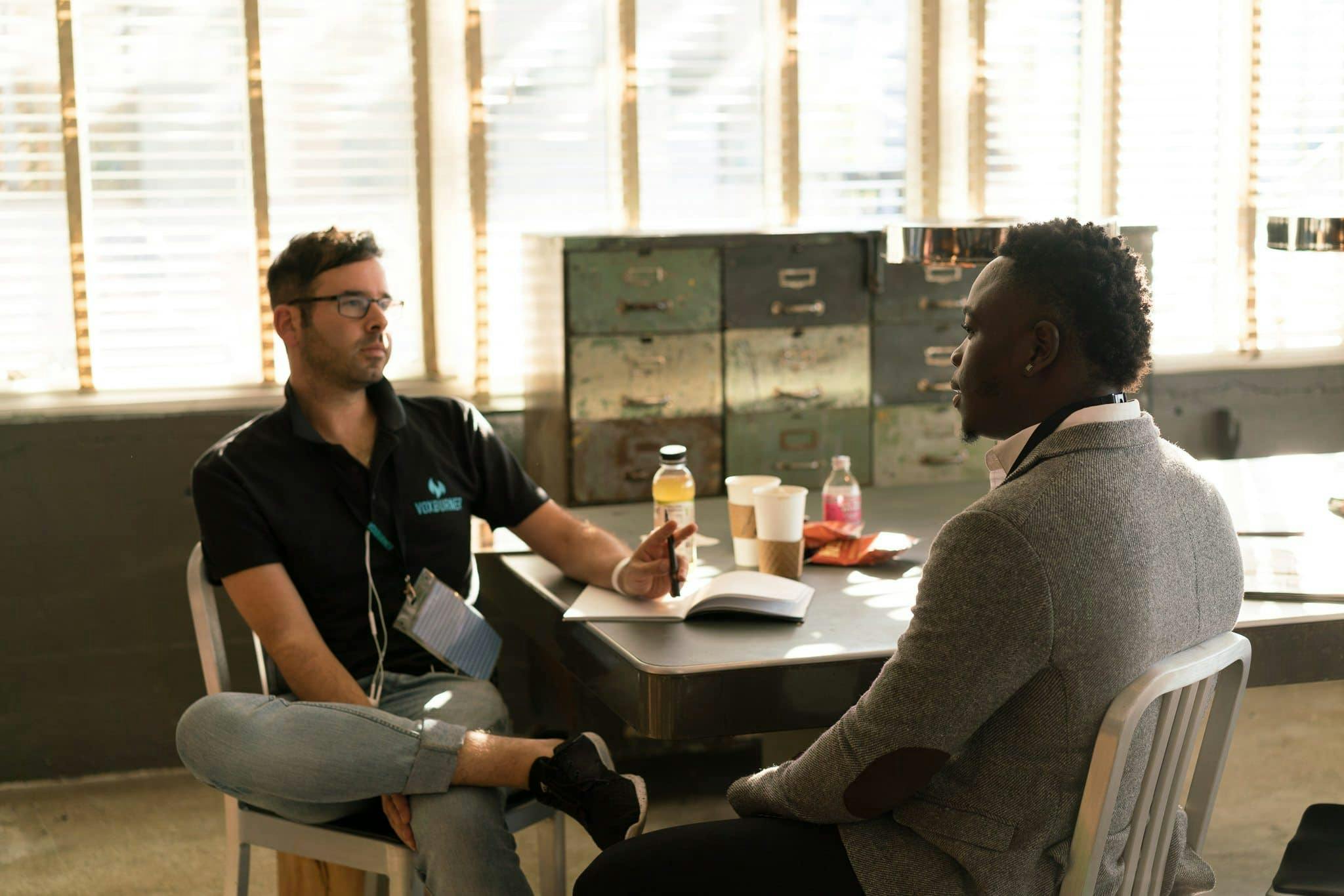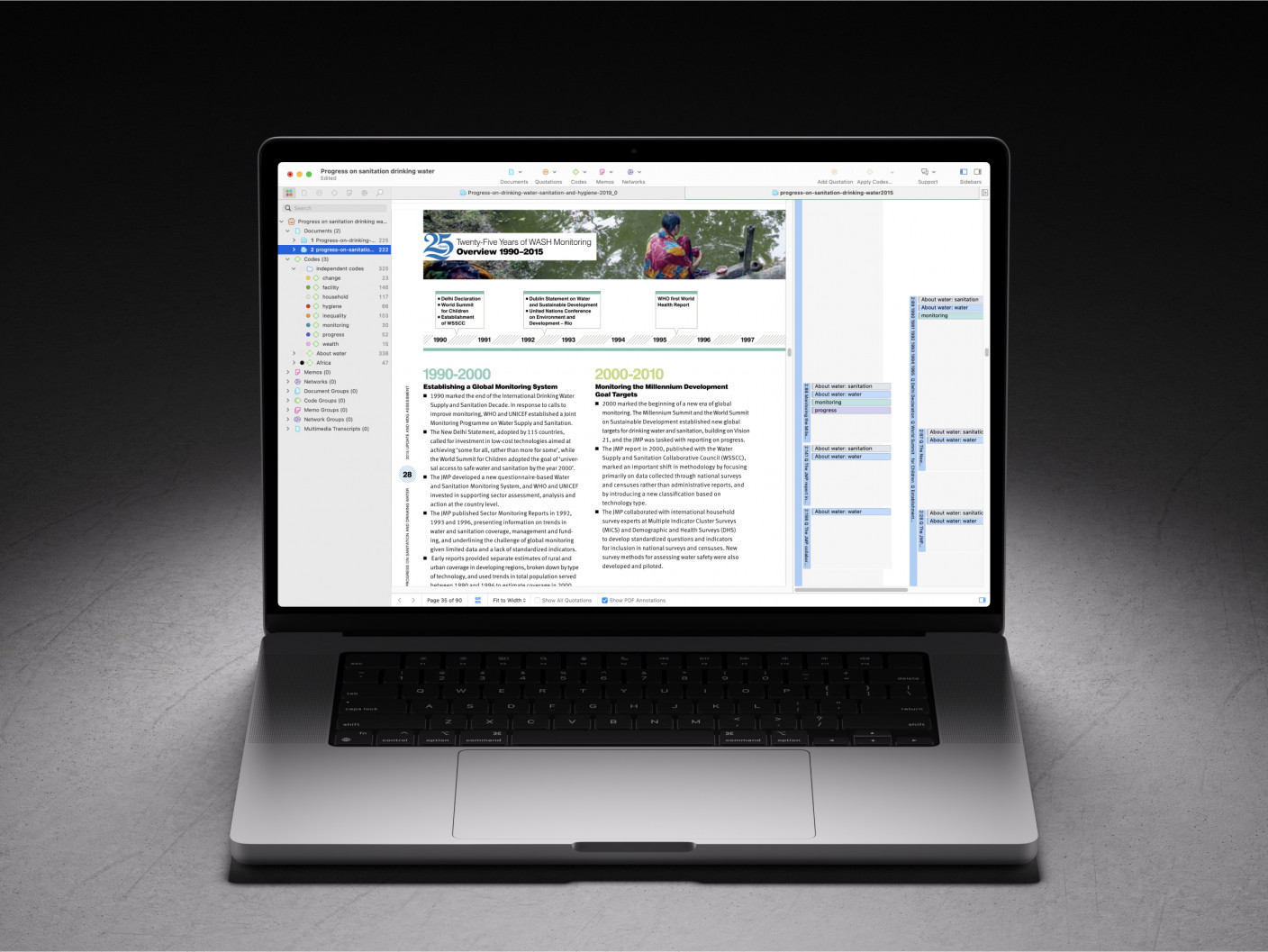Key characteristics of interview questions in qualitative research
Interview questions and research questions
When designing a qualitative interview study, it’s crucial to distinguish between the research question and the interview questions. The research question is the overarching inquiry that drives the entire study. It defines what the researcher aims to understand, explore, or uncover about a particular phenomenon. This question sets the direction for the research and influences every subsequent decision, from selecting participants to choosing data collection methods.
For example, a research question might be: “How do individuals experience the transition to remote work?”
This research question is not something you would directly ask your interviewees. Instead, it serves as a guiding framework for developing your interview questions.
The research question is essential because it:
- Provides focus: It narrows down the broad area of interest into a specific inquiry.
- Guides methodology: It influences the choice of research design, methods, and analysis.
- Motivates the study: It highlights the significance of the research and what it aims to contribute to existing knowledge.
Interview questions
Interview questions are the specific, open-ended questions you ask participants during the interview to gather data related to your research question. These questions are carefully crafted to elicit detailed, meaningful responses that provide insight into the participants’ experiences, perceptions, or beliefs.
Continuing with the earlier example, interview questions might include:
- “Can you describe your daily routine since transitioning to remote work?”
- “What challenges have you faced while working from home?”
- “How has remote work impacted your work-life balance?”
Key characteristics of interview questions in qualitative research
Open-ended: Designed to encourage detailed responses, allowing participants to express themselves fully. Example: Instead of asking, “Do you like remote work?” you might ask, “What do you like or dislike about remote work?”
Exploratory: Aimed at uncovering deeper insights into behaviors, beliefs, and experiences. Example: “How has your perception of work changed since working remotely?”
Flexible and iterative: Can evolve during the research process as new themes or insights emerge. Example: If a participant mentions isolation as a significant issue, you might develop follow-up questions like, “Can you elaborate on how isolation has affected you professionally and personally?”
Starting the interview
Designing an interview involves deciding how you begin it, especially in qualitative research. Thoughtful planning sets the stage for a smooth, engaging conversation. When you design an interview, you’re not just preparing questions—you’re building a foundation that influences tone, rapport, and flow.
The purpose of your interview guides how you introduce it to participants. Clear introductions align with the goals you’ve set, helping participants feel comfortable from the start. The type of interview (structured, semi-structured, or unstructured) also dictates how you begin. Structured interviews may require a more formal approach, while unstructured ones allow for a relaxed, open-ended start.
Rapport-building is embedded in the design. A well-prepared opening creates a comfortable atmosphere, helping participants feel at ease. Setting expectations, such as the interview’s length and purpose, ensures participants know what to expect, reducing uncertainty.
Opening questions designed during planning set the conversational flow, starting broad and easing into deeper topics. Thoughtful design also addresses participant anxiety by providing reassurance and fostering a sense of collaboration.
Time management is crucial—letting participants know the expected length and then sticking to it shows respect for their time. Finally, framing the research topic at the start, based on your design, helps participants understand the importance of their input.
In short, a well-designed interview creates the conditions for a smooth, insightful conversation, where preparation and flexibility meet to foster meaningful dialogue.
Conducting the interview
Conducting an interview stems directly from its design, ensuring the process flows smoothly while adapting in real-time. Flexibility is key; while the design sets a structure, being responsive to unexpected insights enriches the conversation. Well-crafted, open-ended questions invite reflection, and your role is to encourage deeper responses by using follow-ups or probes without leading the participant.
Maintaining rapport throughout the interview is essential. Engaging with verbal and nonverbal cues keeps the participant comfortable and willing to share more. At the same time, it’s important to guide the conversation without influencing their responses, ensuring neutrality while keeping the focus on the research goals.
Time management is critical. While the design outlines the pacing, you must ensure all topics are covered without rushing. Adapting to the participant’s needs, especially if sensitive topics arise, shows respect and creates a supportive environment.
Throughout the interview, stay neutral yet probe deeper into key themes. This ensures richer data without unduly shaping participants’ responses.
In short, conducting an interview is about executing a thoughtful design while staying flexible and responsive to the participant’s experiences.

Ending the interview
Ending an interview thoughtfully is just as important as how you begin and conduct it, ensuring a smooth conclusion that leaves the participant feeling valued. While the design provides a framework, the final moments are where you bring everything together.
As you near the end, signal the interview’s conclusion by summarizing key points or thanking the participant for their time and insights. This reinforces the importance of their contribution and allows them to share any last thoughts or reflections. Avoid rushing through this moment, as it’s an opportunity to gather any additional insights.
Offer a brief overview of the next steps, such as how their responses will be used or when they can expect further contact, if relevant. This maintains transparency and keeps the participant informed about what to expect.
Ending with gratitude is key—acknowledging their time and effort helps leave a positive impression. By following the interview design but remaining attentive to the participant’s experience, the conclusion becomes a respectful and professional closure to the conversation.
The end of an interview ties everything together, leaving participants with a sense of purpose and appreciation for their involvement.
Conclusion
Designing an interview is about more than just asking questions—it’s about setting the stage for a meaningful conversation that brings out the depth and complexity of the participant’s experiences. A thoughtful design ensures that the process runs smoothly, keeping the conversation on track while allowing flexibility for unexpected insights. From selecting the right questions to maintaining rapport and managing time, every decision shapes the quality of the data collected.
When done well, interview design can foster open dialogue and uncover insights that might otherwise remain hidden. By striking a balance between structure and adaptability, researchers can create an environment that encourages genuine, thoughtful responses. This approach not only respects the participant’s input but also ensures that the research captures the full richness of the topic, leading to deeper, more impactful findings.

